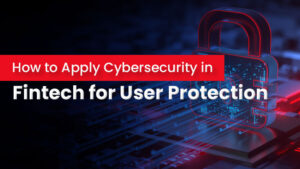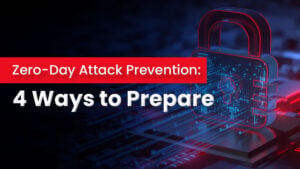
How to Apply Cybersecurity in Fintech for User Protection
Introduction As fintech evolves, it brings innovative financial solutions that enhance user convenience, such as mobile banking, digital lending, and secure payments. However, as financial
Big Savings! Get 50% OFF on all Online Courses. Use code: “SAVE50NOW” – Hurry Up Offer Ending Soon!

Introduction As fintech evolves, it brings innovative financial solutions that enhance user convenience, such as mobile banking, digital lending, and secure payments. However, as financial

Introduction In the realm of cloud computing, Amazon Web Services (AWS) offers a variety of managed database options that help organizations scale, secure, and optimize

Introduction In the ever-evolving landscape of cybersecurity, zero-day attacks pose a significant threat to businesses and individuals alike. A zero-day attack exploits a software vulnerability
Table of Contents
In a time when technology seamlessly integrates into our everyday routines, the complex network of Operational Technology (OT) has become the fundamental support for various industries such as energy, manufacturing, and transportation. Nevertheless, as we welcome the advantages of digital incorporation, we must also address the potential threats of cyberattacks on OT systems. These attacks go beyond simple data breaches, giving rise to a new era of apprehensions that require prompt attention and creative solutions.
Are you currently exploring or considering diving into the realm of IT and cloud technology? Get the best course by accessing comprehensive IT certification training and resources offered by IPSpecialist. From beginner-level courses to mastering Microsoft, Cloud, Cybersecurity, and Networking, IPSpecialist offers diverse Courses, study guides, and practice exams tailored to amplify your skills. Elevate your career in the dynamic realm of cybersecurity—explore their offerings now!
In this blog, we will discuss the evolving OT threats and how we can ensure our critical infrastructure’s safe and reliable operation in the digital age. Let’s get started!
Operational technology encompasses the machinery, systems, and processes that drive the critical infrastructures of our world. From power grids and water treatment facilities to transportation systems and manufacturing plants, OT environments oversee and control the physical processes that shape modern life. However, their seamless connectivity also exposes them to various cyber threats.
A successful cyberattack on an OT environment can have catastrophic consequences. Imagine a malicious hack targeting a city’s water treatment plant. The resulting chaos could lead to a contaminated water supply, posing a significant risk to public health and safety.
Beyond causing operational disruptions, cyberattacks directed at OT environments often aim to steal proprietary data and sensitive information. A breach could unveil intricate process details, manufacturing techniques, and intellectual property, providing competitors with an unfair advantage.
A particularly alarming aspect of cyberattacks on OT environments is their potential to inflict physical harm. A compromised industrial control system could manipulate machinery to operate at unsafe levels, resulting in accidents, equipment damage, or even life-threatening incidents.
The ripple effect of cyberattacks reverberates throughout supply chains. A breach in one company’s OT systems can cascade through its partners and vendors, disrupting entire industries and compromising critical services.
Several factors contribute to the susceptibility of OT environments to cyberattacks:
Operational Technology (OT) and Industrial Control Systems (ICS) are integral in safeguarding critical infrastructure. These systems enable real-time monitoring and control of physical processes, employing advanced threat detection and incident response tools. Access controls and authentication mechanisms ensure authorized personnel manage critical infrastructure, while network segmentation minimizes the impact of potential cyberattacks. Encryption and secure communication protocols protect sensitive data, and regular audits maintain compliance with cybersecurity standards. Training programs educate personnel on cybersecurity best practices, and collaboration fosters information sharing to collectively address evolving OT cyber risks. In essence, OT ICS systems play a pivotal role in fortifying critical infrastructure through a multifaceted approach that encompasses technology, personnel training, and collaborative efforts.
As the vulnerabilities within OT environments become more evident, the imperative for comprehensive cybersecurity measures grows. Combating cyber threats in these environments requires a strategic, multi-layered approach that integrates both technological solutions and human vigilance.
A key strategy involves restricting external access to OT networks through segmentation and air gapping. By isolating critical systems from the broader internet, organizations can minimize their exposure to potential attacks.
The implementation of robust authentication and authorization measures ensures that only authorized personnel can access and control critical systems, reducing the risk of unauthorized intrusion.
Maintaining a vigilant watch over OT environments is crucial. Continuous monitoring solutions enable swift detection of anomalies, empowering organizations to respond promptly to potential threats.
Periodic security audits and penetration testing assist in identifying vulnerabilities in OT systems. Proactively addressing weaknesses allows organizations to thwart potential attacks before they escalate.
Equipping employees with the knowledge and awareness to identify and report suspicious activities is crucial. A well-informed workforce often serves as the initial line of defense against cyber threats.
Cyberattacks on OT environments transcend industry boundaries. Collaborative efforts that facilitate information sharing and the adoption of best practices can strengthen defenses and hinder the spread of attacks.
The future of OT cybersecurity is about moving beyond just protecting data. It’s about safeguarding the systems that keep our societies running, from power grids and water treatment plants to transportation networks and healthcare facilities. By embracing resilience, innovation, and collaboration, we can build a more secure and sustainable future for critical infrastructure across the globe.
Remember, the landscape of threats and technologies will continue to evolve, demanding constant adaptation and vigilance. By staying informed and proactively adopting these emerging trends, we can ensure our vital infrastructure’s ongoing protection against tomorrow’s ever-evolving cyber threats.
In the face of the intricate web of digital integration, securing the Operational Technology (OT) that powers our critical infrastructure emerges as a defining challenge. The stakes are high, extending beyond data loss to the very fabric of our societies. This blog serves not as a prophecy of doom but as a call to action, urging us to confront vulnerabilities with innovation and resilience.
The future envisioned is one where technology seamlessly safeguards power grids, water treatment plants, and transportation networks. It’s a commitment to turning technology integration into a strength rather than a vulnerability.
Our journey toward this secure future relies on engineers, policymakers, and informed individuals. Through continuous learning, adaptation, and collaboration, we can ensure the unseen arteries of our world pulse with the vibrancy of security, creating a safer, more resilient future.
Q1: What is the significance of Operational Technology (OT) Cybersecurity?
Answer: OT Cybersecurity is crucial as it safeguards the critical infrastructure supporting industries like energy, manufacturing, and transportation. It protects against cyber threats that could lead to disruptions, physical harm, theft of intellectual property, and chaos in the supply chain, ensuring the reliable operation of essential services.
Q2: What factors make OT environments susceptible to cyberattacks?
Answer: Several factors contribute to the susceptibility of OT environments, including seamless connectivity, an increased attack surface due to integration with information technology, a lack of security measures, high stakes with severe consequences, and motivations for cybercriminals such as industrial espionage and financial gain.
Q3: What measures can organizations take to enhance OT Cybersecurity?
Answer: Organizations can enhance OT Cybersecurity by implementing network segmentation and isolation, enforcing strong authentication and authorization protocols, maintaining continuous monitoring and incident response capabilities, conducting regular security audits and penetration testing, providing training and education for employees, and fostering collaborative defense efforts with information sharing and best practices adoption.
© 2024 All rights reserved | Privacy Policy | Terms and Conditions | Sitemap | Cookie Policy




